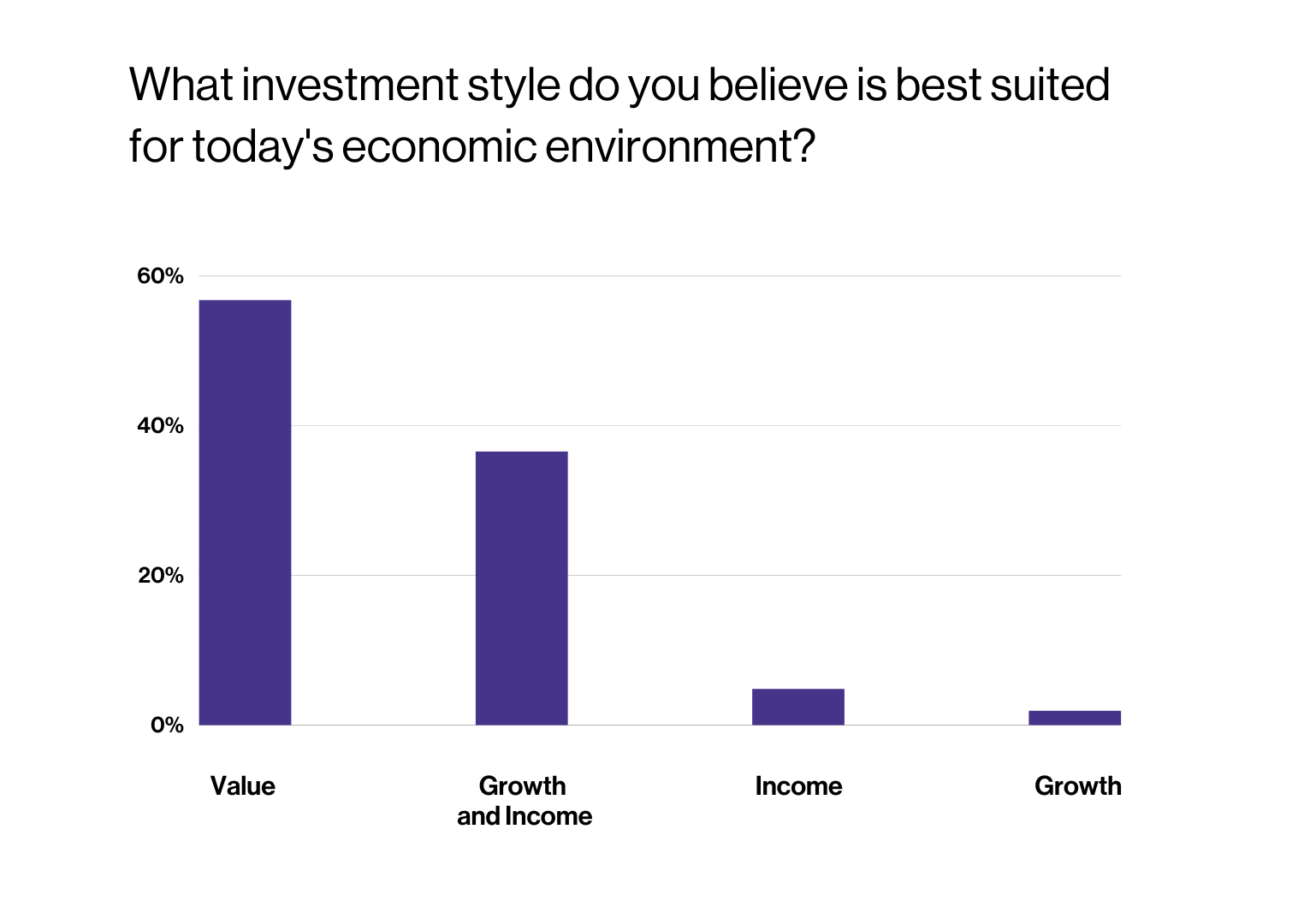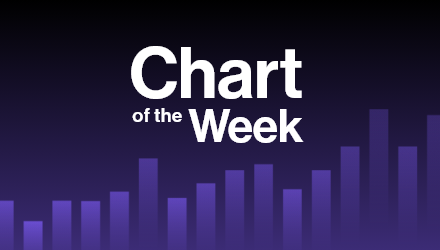After a long stretch of underperformance of its growth strategy peers, 2022 has been the year of value ETFs. Index-based value strategies tied to the S&P 500 or the Russell 1000 Indexes were outperforming the growth alternative by more than 2,000 basis points year-to-date through mid-December. But past performance is not necessarily indicative of future results, so it can be helpful to hear how advisors are thinking as they look forward.
During a late November webcast with Nationwide, VettaFi asked advisors, “What investment style do you believe is best suited for today’s environment?” The majority of respondents believed that value looked best (with 57% of the vote), followed by growth and income (37%), with income alone and growth alone receiving the small remainder.

While value is clearly in demand, advisors need to do more than ensure they buy an ETF with value in the name. Indeed, there are a wide variety of value ETFs to consider.
The iShares S&P 500 Value ETF (IVE) and the iShares Russell 1000 Value ETF (IWD) are two examples of value strategies tied to broad market indexes. While there are differences between them, including 400 additional, mostly mid-cap holdings for IWD, the pair are market cap-weighted and have significant overlap among the largest positions. Berkshire Hathaway, Chevron, Exxon Mobil, Johnson & Johnson, and JPMorgan are among the top 10 holdings of both ETFs. The Vanguard Value ETF (VTV) is similar to IVE and IWD in construction, though it has a lower expense ratio.
Meanwhile, the Invesco S&P 500 Pure Value ETF (RPV) and the Alpha Architect US Quantitative Value ETF (QVAL) are two examples of value ETFs that take a concentrated focus on low-priced stocks rather than providing a broad market exposure with a value tilt. While IVE, IWD, and VTV each have over 300 positions, deeper value QVAL and RPV have just 53 and 121, respectively. QVAL’s top holdings include Macy’s, Peabody Energy, and Steel Dynamics, while RPV’s consist of Archer-Daniels-Midland, Cigna, and Marathon Petroleum. The more concentrated approaches can offer higher reward potential, but also incur higher risk than the broad market products.
Though each of the aforementioned value ETFs tends to tilt or heavily lean on certain sectors, such as energy, financials, and materials, there’s an alternative for advisors who want a more diversified approach. The iShares MSCI USA Value Factor ETF (VLUE) owns approximately 150 stocks that are relatively undervalued within their sector. The fund is more heavily exposed to information technology than its peers because that is the largest sector in the market, with Cisco Systems and Intel as examples of top positions advisors would find in the fund along with AT&T, Citigroup, and Dow.
What is inside a given value ETF has driven returns in 2022 and will be the determining factor going forward. So before buying a value ETF, make sure you understand what it owns.
For more news, information, and analysis, visit the Innovative ETFs Channel.








